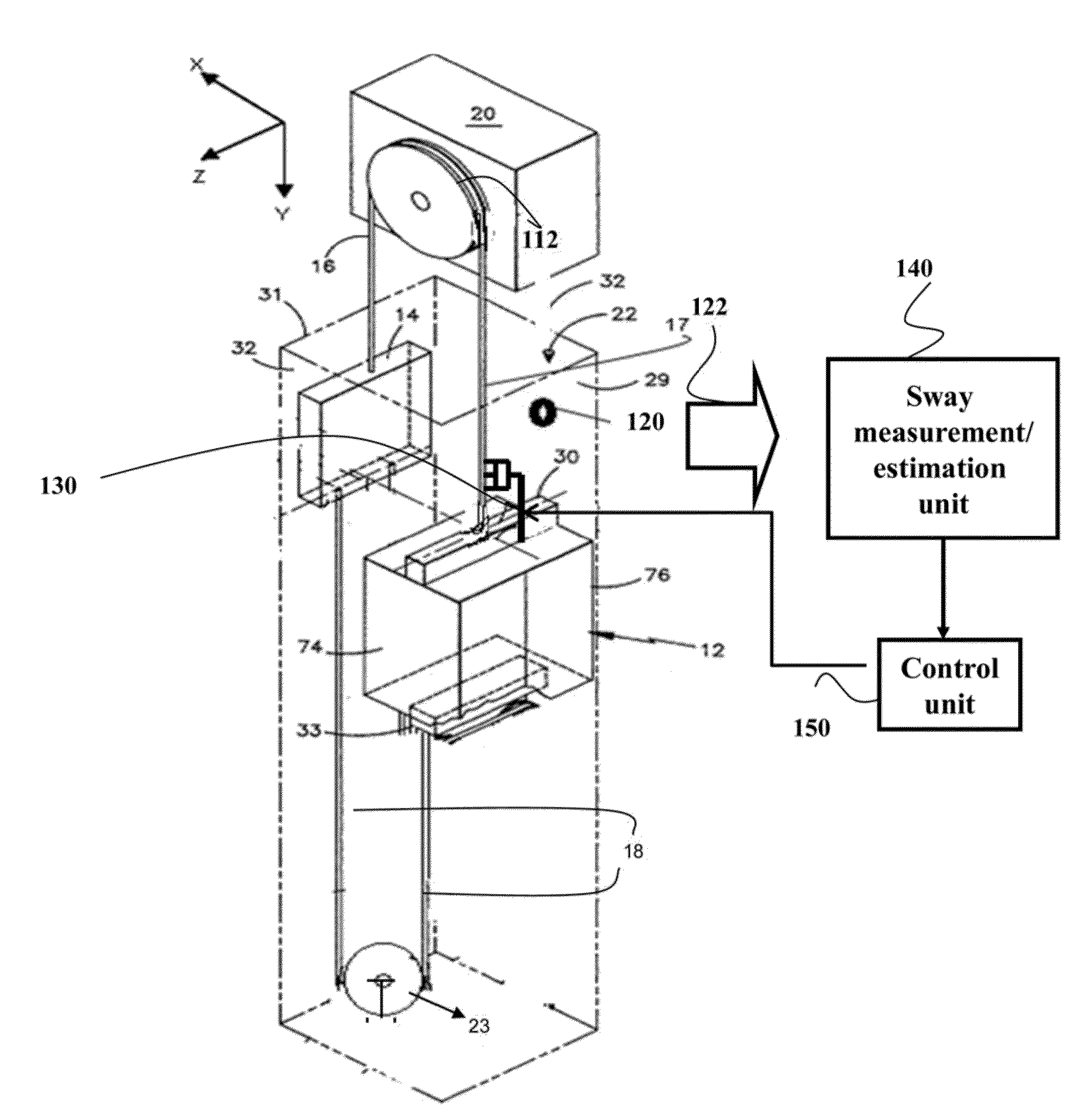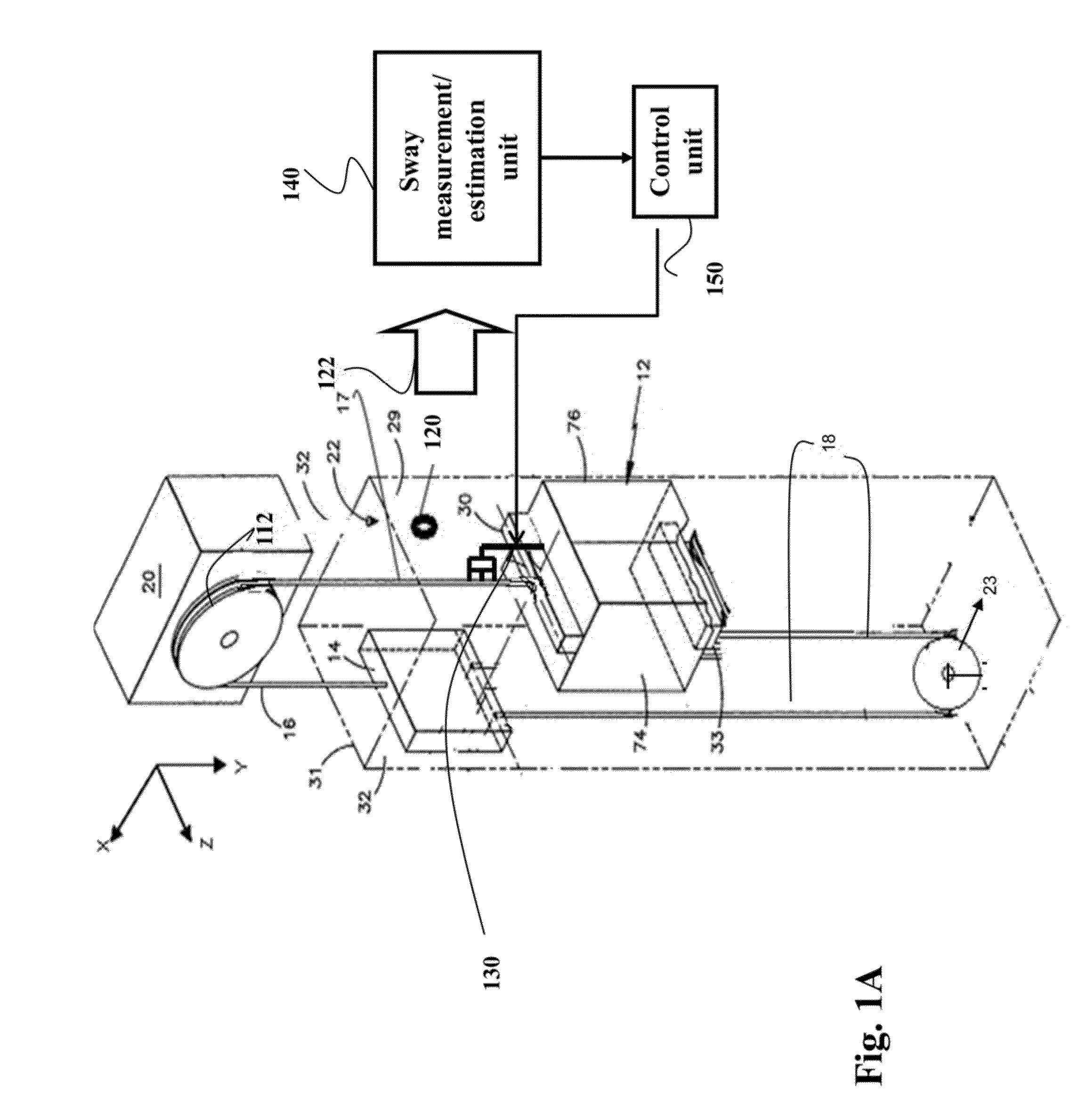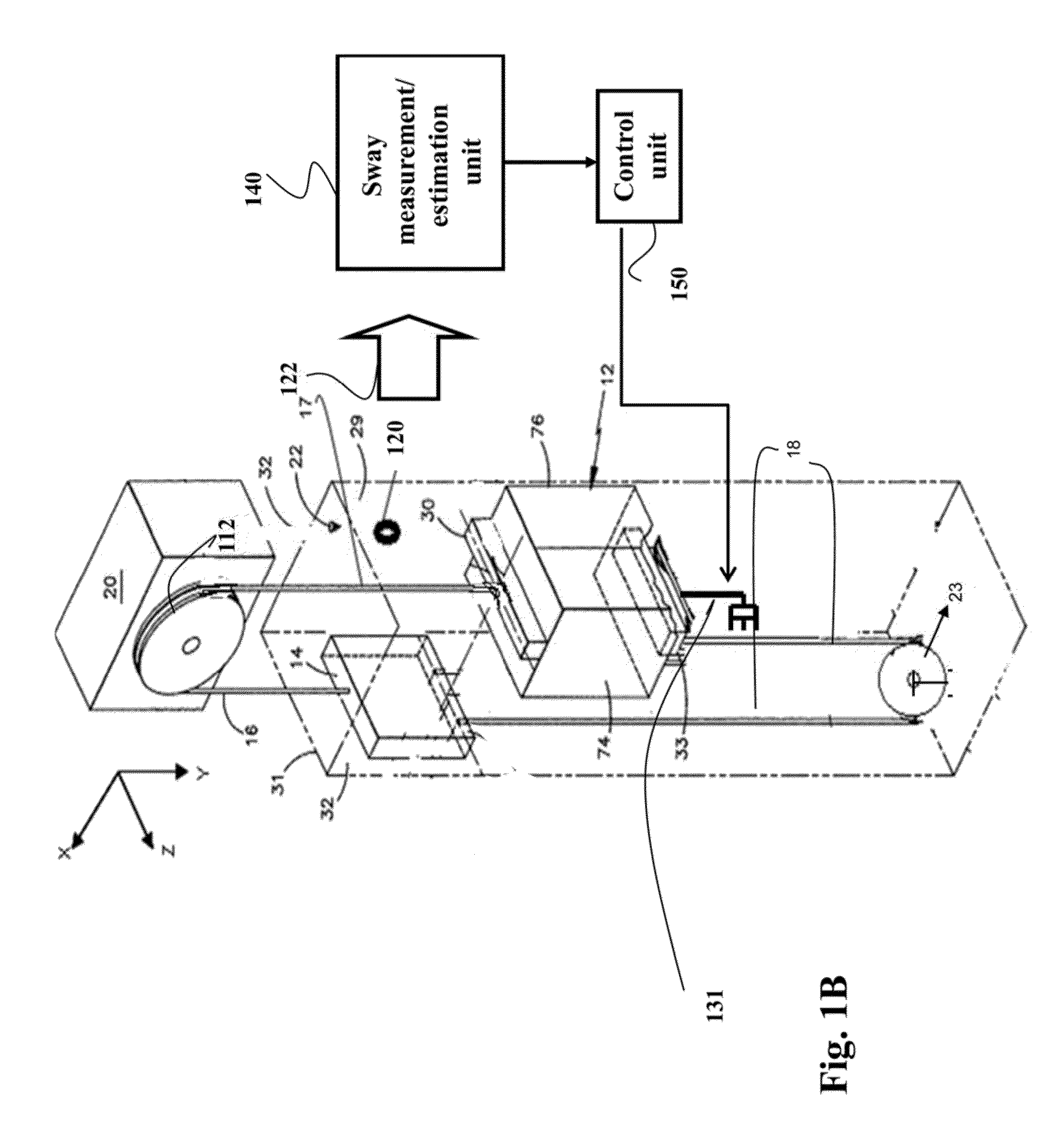Semi-Active Feedback Control of Elevator Rope Sway
a technology of semi-active feedback and elevator rope, which is applied in the direction of computer control, elevators, instruments, etc., can solve the problems of unnecessary stress on the ropes, significant oscillation, and damage to the elevator system, and achieve the effect of reducing the sway of the elevator rop
- Summary
- Abstract
- Description
- Claims
- Application Information
AI Technical Summary
Benefits of technology
Problems solved by technology
Method used
Image
Examples
Embodiment Construction
[0025]Vibration reduction in mechanical systems is important for a number of reasons including safety and efficiency of the systems. Particularly, vibration, such as a lateral sway of an elevator rope in the elevator system, is directly related to ride quality and safety of passengers, and, thus, should be reduced.
[0026]The vibration induced by, e.g., external disturbance such as wind or seismic activity, can be reduced by various types of suspension systems. Generally, there are passive, semi-active, and active types of the suspension systems. The passive suspension system has undesirable ride quality. The active suspension systems use actuators that can exert an independent force on the suspension to improve the comfort of riding and can provide desirable performance for reducing the vibration. The drawbacks of the active suspension system are increased cost, complication, mass, and maintenance.
[0027]The semi-active suspension systems provide a better trade-off between system cost...
PUM
 Login to View More
Login to View More Abstract
Description
Claims
Application Information
 Login to View More
Login to View More - R&D
- Intellectual Property
- Life Sciences
- Materials
- Tech Scout
- Unparalleled Data Quality
- Higher Quality Content
- 60% Fewer Hallucinations
Browse by: Latest US Patents, China's latest patents, Technical Efficacy Thesaurus, Application Domain, Technology Topic, Popular Technical Reports.
© 2025 PatSnap. All rights reserved.Legal|Privacy policy|Modern Slavery Act Transparency Statement|Sitemap|About US| Contact US: help@patsnap.com



